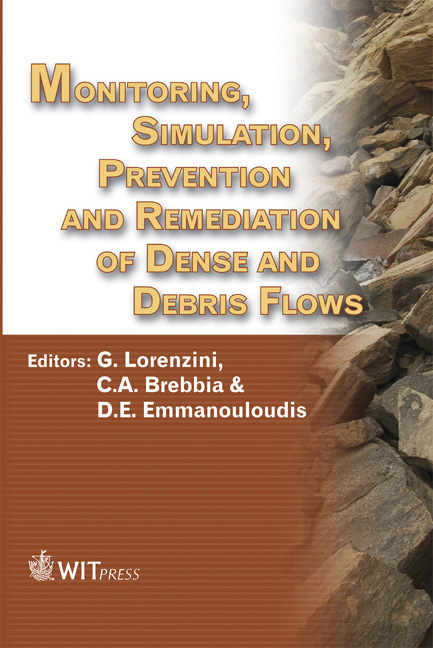Triggering Mechanisms Of Soil Instability
Price
Free (open access)
Transaction
Volume
90
Pages
10
Published
2006
Size
372 kb
Paper DOI
10.2495/DEB060261
Copyright
WIT Press
Author(s)
A. Daouadji, H.Al Gali & F.Darve
Abstract
In this study, we present a device designed to investigate the behavior of very loose sand subjected to strain and stress loading paths. The influence of these loading paths is analyzed with particular attention to potential instabilities. Comparisons are made with results obtained from experimental data from literature. A particular stress path, i.e. a constant shear undrained path, is then detailed and results are discussed. Experimental results show that diffuse mode failure occurs before the Mohr-Coulomb failure surface is reached. It is shown for these undrained tests that excess pore pressure results from collapse and it is not a trigger parameter. Keywords: instability, collapse, very loose sand, constant shear undrained path, diffuse failure, load-controlled triaxial tests. 1 Introduction Several studies have shown that a plastic limit criterion, such the Mohr-Coulomb criterion, does not explain all the types of ruptures that occur in soils. Previous studies well explain the localization phenomena that can occur during the load-ing. Failure is often the result of strain localization (vanishing determinant of the acoustic tensor as criterion, for example) which is close to, but does not reach, the Mohr-Coulomb criterion. However, in case of very loose sands, recent studies (Servant et al. [15]) have shown that failure can develop in a diffuse mode and in this case the observed failure mode is a diffuse collapse. Diffuse mode implies that criterion for bifurcation are reached before the localization criterion. It is important to note that these collapses strictly occur inside Mohr-Coulomb plastic limit crite-rion and that the conventional failure analysis cannot explain them. Indeed, some
Keywords
instability, collapse, very loose sand, constant shear undrained path, diffuse failure, load-controlled triaxial tests.





